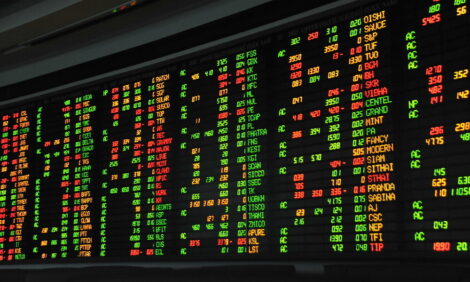



Live cattle futures continue to fall - CME
Lean hog futures edge upChicago Mercantile Exchange (CME) live cattle futures hit their lowest levels since June on Tuesday, as the market continued to digest larger-than-expected US supply numbers, according to Reuters.
The market stabilized, however, after the February contract on Monday tumbled by the exchange-imposed daily trading limit. Trading limits for live cattle will revert back to the normal 6.75 cents on Wednesday after CME temporarily expanded them to 10 cents on Tuesday.
Cattle futures have reached record highs this year after drought and high feed costs drove US ranchers to reduce the nation's herd to its smallest in decades.
But the US Department of Agriculture surprised livestock traders after markets closed on Friday by reporting larger-than-expected placements of cattle in US feedlots in September. There were also more cattle in feedlots as of Oct. 1 than analysts estimated.
"It does appear to serve as a turning point of the industry's perception of herd size direction over the next year," brokerage StoneX said.
CME December live cattle settled up 0.275 cent at 178.625 cents per pound after hitting its lowest price since June 22 at 177.300 cents. February live cattle finished down 0.125 cent at 180.850 cents per pound and touched its lowest price since June 1 at 179.550 cents.
January feeder cattle ended 0.850 cent lower at 234.850 cents per pound and reached their lowest price since June 21 at 233.875 cents.
Packers used the weakness in futures prices to buy some cattle at lower prices in the cash market, brokers said. Fed cattle traded in Iowa at around $184 per cwt, down about $2 from last week, they said.
In CME lean hog futures, December futures edged up 0.200 cent to 66.375 cents per pound after setting a contract low of 65.4 cents on Friday. The February, April, May and June 2024 contracts set new lows on Tuesday amid ample US supplies.
The hog market looks oversold and due for a bounce, brokers said.



